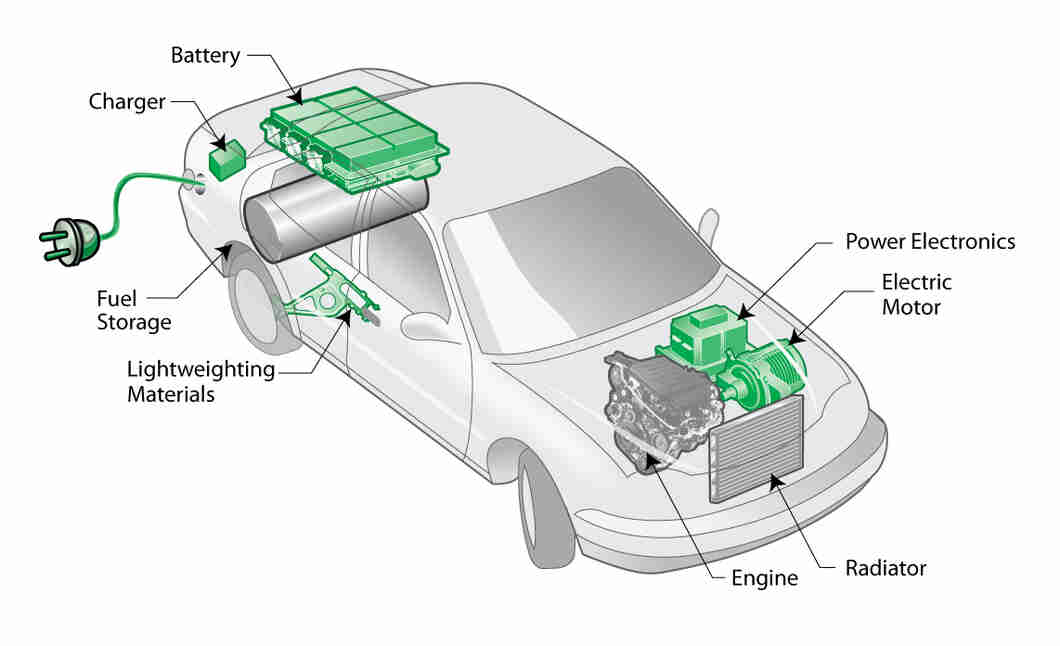What kind of electric cars are currently profitable to use?
19.03.2023
It should be noted that the first type of transition from a conventional car to an electric one, i.e. a hybrid car (HEV) has already been used in the country for several years. Its only drawback is the lack of possibility to charge from an external power source.
Currently, a lot of material is published on the Internet and mass media about the advantages of electric cars, but its main problem, that is, the impact of its batteries (mainly composed of lithium and its compounds) on the environment after the period of use has not been fully studied. It is important that reputable manufacturing companies thoroughly research and diagnose their products and introduce them to the market. At the same time, newly established small companies are trying to introduce new products, such as electric cars, some parts of which, including batteries, have not passed a long-term test, to the markets of other countries as a "trial type", or the so-called "experimental model". ” (eng. preproduction model) offer invisible. Therefore, in the introduction of electric cars and batteries, first of all, attention should be paid to the level and quality of the product and the reputation of the manufacturer.
At the first stage, it is not appropriate to use electric cars, in which the only source of energy storage is batteries. The first reason is the high cost of batteries, which currently account for up to 40% of the price of an electric car. The second issue is the electric car's power reserve, which depends on the external temperature, and it takes a certain amount of time to charge the battery. Depending on the capacity of the charging station and the capacity of the batteries, it takes from 30 minutes to several hours to fully charge, although progress is being made in this direction. In addition to what we mentioned above, the problem of disarming batteries is a pressing issue. It should be noted that the Program has a special chapter devoted to the disposal of electric vehicle batteries, which presents a set of activities for the recycling and disposal of used batteries.
On the other hand, after a certain period of time, it is necessary to buy new batteries, and it is possible that the batteries intended for a particular electric car will no longer be produced. That is, in most cases, we will have permanent dependence on the manufacturer.
In our opinion, the use of two types of electric vehicles is suitable for the conditions of our country. Due to the fact that it is impossible to give up gas and oil fuel at once, the first is plug-in hybrid vehicles (PHEV), which work through two sources of mechanical energy, namely electric and internal combustion engines, and the possibility of charging the battery from the external electrical network.
The second is the use of hydrogen energy through fuel cell electric vehicles, in which the energy carrier (in this case, hydrogen) is stored in special cylinders under pressure up to 700 atmospheres. At the same time, such cars are equipped with a certain number of batteries. The production of electrical energy from fuel cells using hydrogen is a very promising direction, especially in road transport.
The most important advantage of such electric vehicles is the short time for filling the cylinder with hydrogen. The FCEV's hydrogen tank can be filled in less than five minutes. Another major advantage over battery electric vehicles is the range, which is typically over 500 kilometers. The efficiency of such electric vehicles does not depend on the outside temperature.
The best example of a hydrogen electric vehicle is the Toyota Mirai. Mirai itself means "future" in Japanese, which is certainly fitting for a car. Its first type went on sale in 2014, and later its improved versions were offered to the market. Said vehicle is equipped with a 113 kW (154 hp) electric motor, which receives electrical energy from fuel cells. Energy generation in fuel cells occurs as a result of a chemical reaction of hydrogen binding with atmospheric oxygen. Hydrogen in the car in two cylinders (60 and 62.4 liters) at a pressure of 700 atm. (for comparison, liquefied gas is stored up to 16 atm.), Its mass is only 5 kg. The filling time of the cylinders is up to 3 minutes and allows the car to travel up to 650 km in free mode. As a result of using hydrogen as an energy source, the car emits about 6 liters of “waste” clean water into the environment every 100 km.
The use of hydrogen energy from fuel cells is especially useful in public transport (buses, minibuses, etc.) and freight transport.
The main energy carrier for such vehicles is hydrogen. The following hydrogen production methods are currently available:
Water electrolysis is the decomposition of water molecules into its constituent parts (H2 and O2) using electrical energy.
Steam decomposition of methane. Most of the world's hydrogen production comes from the breakdown of hydrocarbon molecules into H2 and CO. This is usually done using natural gas (methane, CH4) as the feedstock.
Hydrogen as a "waste" Some electrochemical processes in industry, such as the production of chlorine, produce hydrogen as a "waste" or by-product. This by-product is a very pure product that is well suited for automotive and fuel cell applications.
Among these methods, it is expedient for our country to obtain hydrogen by electrolysis. The production of hydrogen in this way is relatively expensive, 3 to 6 times more expensive than the production of hydrogen from natural gas, and is considered efficient only if implemented using renewable energy sources. Due to the availability of large resources and environmental friendliness, including using solar, wind and other forms of renewable energy, there are many opportunities for splitting water into hydrogen and oxygen. As mentioned above, in our country, 98 percent of electricity is produced using water resources. However, the production and consumption of electrical energy in the country is seasonal, and in this regard, the production and storage of hydrogen in the hot season and its further use in the cold season increases the efficiency of the use of electrical energy. On the other hand, produced hydrogen is becoming an import-substituting product as the demand for oil and gas fuel imports is gradually decreasing.
The current disadvantages for users are, first of all, the lack of a special infrastructure in the country for the production, storage and sale of hydrogen. This problem exists in the developed countries of the world.
That is, the most important task is the creation of a special infrastructure, which is a process of production and storage (accumulation) or storage, as well as the supply of vehicles with hydrogen. Currently, there are basically two options for supplying hydrogen.
The first option is suitable for areas or special facilities that have an increased need for hydrogen. At the same time, hydrogen must be delivered from the place of production using special vehicles and delivered to consumers at the places where hydrogen is sold.
The second option is suitable for small and remote populated areas, in which case hydrogen is produced and sold at the point of sale of fuel. Currently, the production of hydrogen-powered trucks and buses is highly developed. That is, during the construction of various facilities in remote areas, including hydrotechnical facilities, construction and reconstruction of roads, production and processing of minerals, it is possible to produce hydrogen in the facility itself using electric energy, and the need to transport fuel disappears.
In 2020, the European Union adopted a strategy called the "EU Hydrogen Strategy[1]" (Hydrogen Strategy), which foresees, among other activities, several research and innovation projects in the framework of the Horizon Europe program. Scientific-educational institutions of our country also have full right to apply for grants. The results of research on the use of hydrogen are available on the website.
That is, in any case, the creation of a special infrastructure helps to increase employment and introduce modern technologies. All the technical means for introducing such an infrastructure are already available on the world market, that is, there is no need to "reinvent the bicycle". Only the effective use of world-class scientific results and the introduction of advanced technology play a key role in this area.
e-mail: mamadamonabdullo@ttu.tj
whatsapp: +992934257775
[1] https://energy.ec.europa.eu/topics/energy-systems-integration/hydrogen_en#eu-hydrogen-strategy










